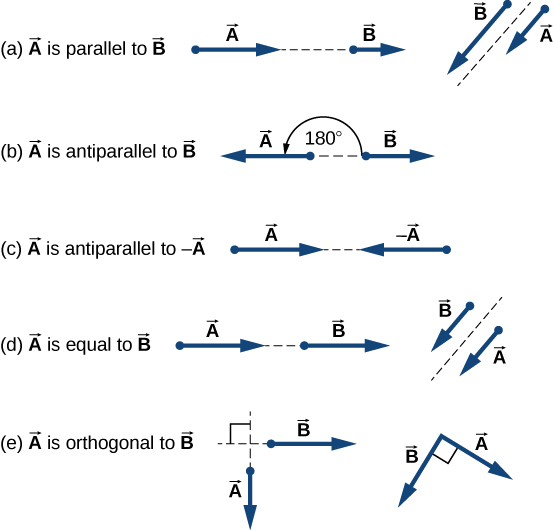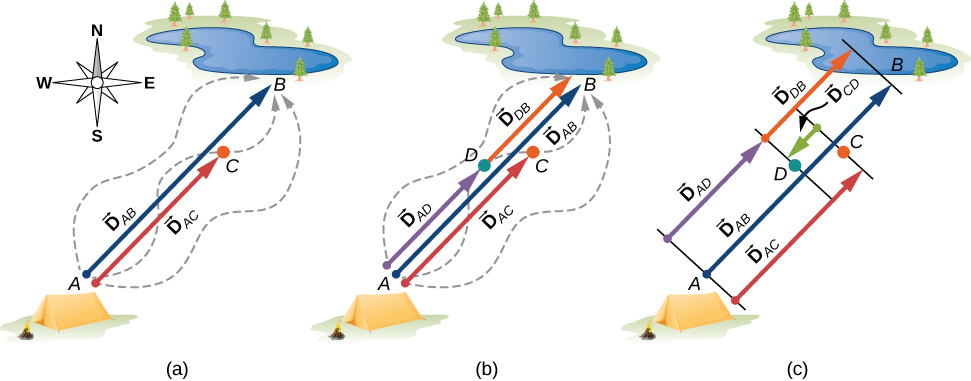| << Chapter < Page | Chapter >> Page > |
Two vectors that have identical directions are said to be parallel vectors —meaning, they are parallel to each other. Two parallel vectors and are equal, denoted by , if and only if they have equal magnitudes . Two vectors with directions perpendicular to each other are said to be orthogonal vectors . These relations between vectors are illustrated in [link] .

Check Your Understanding Two motorboats named Alice and Bob are moving on a lake. Given the information about their velocity vectors in each of the following situations, indicate whether their velocity vectors are equal or otherwise. (a) Alice moves north at 6 knots and Bob moves west at 6 knots. (b) Alice moves west at 6 knots and Bob moves west at 3 knots. (c) Alice moves northeast at 6 knots and Bob moves south at 3 knots. (d) Alice moves northeast at 6 knots and Bob moves southwest at 6 knots. (e) Alice moves northeast at 2 knots and Bob moves closer to the shore northeast at 2 knots.
a. not equal because they are orthogonal; b. not equal because they have different magnitudes; c. not equal because they have different magnitudes and directions; d. not equal because they are antiparallel; e. equal.
Vectors can be multiplied by scalars, added to other vectors, or subtracted from other vectors. We can illustrate these vector concepts using an example of the fishing trip seen in [link] .

Suppose your friend departs from point A (the campsite) and walks in the direction to point B (the fishing pond), but, along the way, stops to rest at some point C located three-quarters of the distance between A and B , beginning from point A ( [link] (a)). What is his displacement vector when he reaches point C ? We know that if he walks all the way to B , his displacement vector relative to A is , which has magnitude and a direction of northeast. If he walks only a 0.75 fraction of the total distance, maintaining the northeasterly direction, at point C he must be away from the campsite at A . So, his displacement vector at the rest point C has magnitude and is parallel to the displacement vector . All of this can be stated succinctly in the form of the following vector equation :
In a vector equation, both sides of the equation are vectors. The previous equation is an example of a vector multiplied by a positive scalar (number) . The result, , of such a multiplication is a new vector with a direction parallel to the direction of the original vector .

Notification Switch
Would you like to follow the 'University physics volume 1' conversation and receive update notifications?